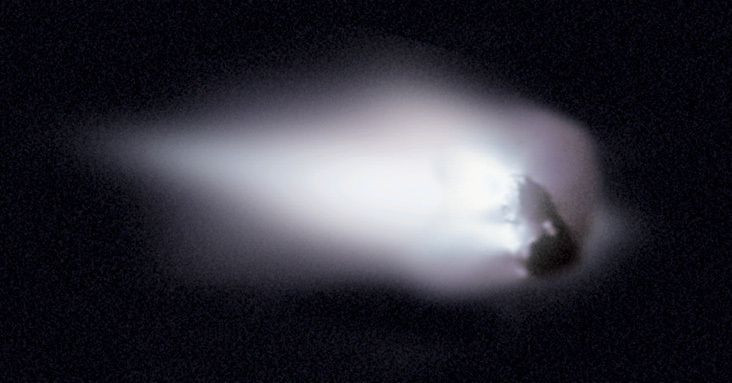Comet ATLAS: Astronomers Capture Images Of Fragments As Approaching Comet Breaks Apart

KEY POINTS
- Comet ATLAS was discovered due to its increasing brightness
- Astronomers confirmed that ATLAS has started to break apart
- The comet might completely break apart before reaching the Sun
Astronomers from different parts of the world have confirmed that the comet flying towards Earth has started to break apart. They believe the comet might completely dissolve before it reaches the Sun.
The approaching comet has been identified as C/2019 or ATLAS. It caught the attention of astronomers in December last year due to its increasing brightness.
Initial observations on the comet revealed that its atmosphere or the cosmic cloud around it had a diameter of about 720,000 kilometers. The massive size of the comet’s atmosphere is primarily responsible for its immense brightness.
According to astronomers, the comet might be bright enough to be visible to the human eye when it approaches Earth in May. They estimated that ATLAS would be about 73 million miles from the planet during its flyby.
Unfortunately, based on recent observations on the comet, ATLAS might no longer be visible from Earth during its visit. As confirmed by the astronomers, the comet has already started to break apart.
ATLAS’ fragmentation was confirmed by amateur astronomer Jose de Queiroz, who was able to photograph around three pieces of the comet on April 11.
Astronomers in Taiwan made similar observations about the comet. Details from their observations, which were presented in the Astronomer’s Telegram, revealed ATLAS’ leading fragment is about 3,400 kilometers away from the comet’s two other pieces.
According to the astronomers, it is not yet clear what caused the comet to break apart. They suggested further observations to investigate further changes on the comet’s surface. They believe these could provide clues regarding ATLAS’ fragmentation.
Due to the current state of the comet, astronomers believe that ATLAS might not be able to make its trip to the Sun, which is also expected to happen this year. If the comet’s fragmentation continues, ATLAS might completely break apart before it approaches the massive star.
Karl Battams of the Naval Research Lab in Washington D.C. previously explained that the trajectory of the comet might also change due to its fragmentation.
“It's possible that this is the beginning of the end,” he said, according to SpaceWeather.com. “The comet's orbit is now being influenced by 'non-gravitational' forces. These forces are the result of gases lifting off the comet nucleus and causing the nucleus to move very slightly in the opposite direction--sort of like a jet engine.”
© Copyright IBTimes 2024. All rights reserved.





















